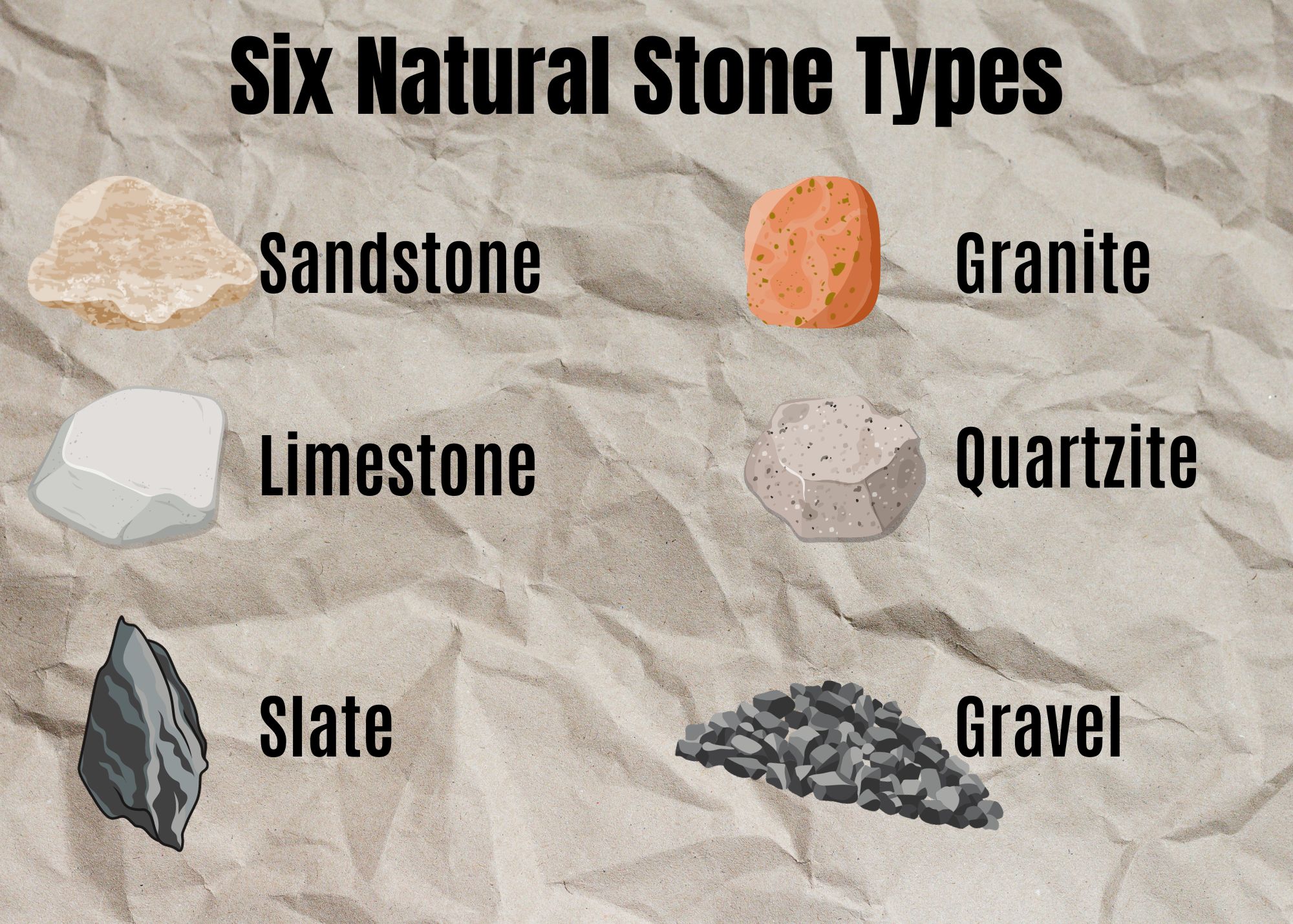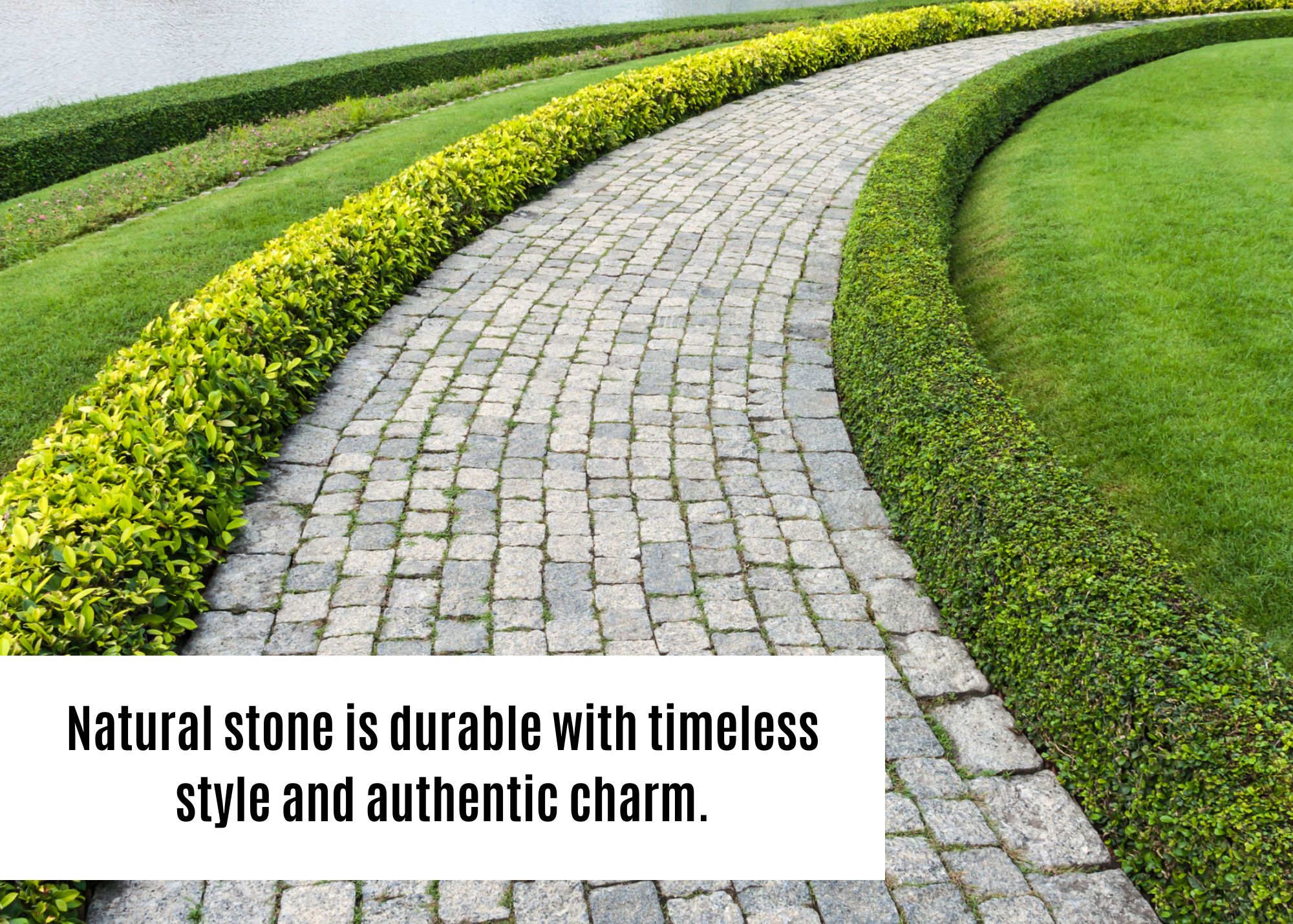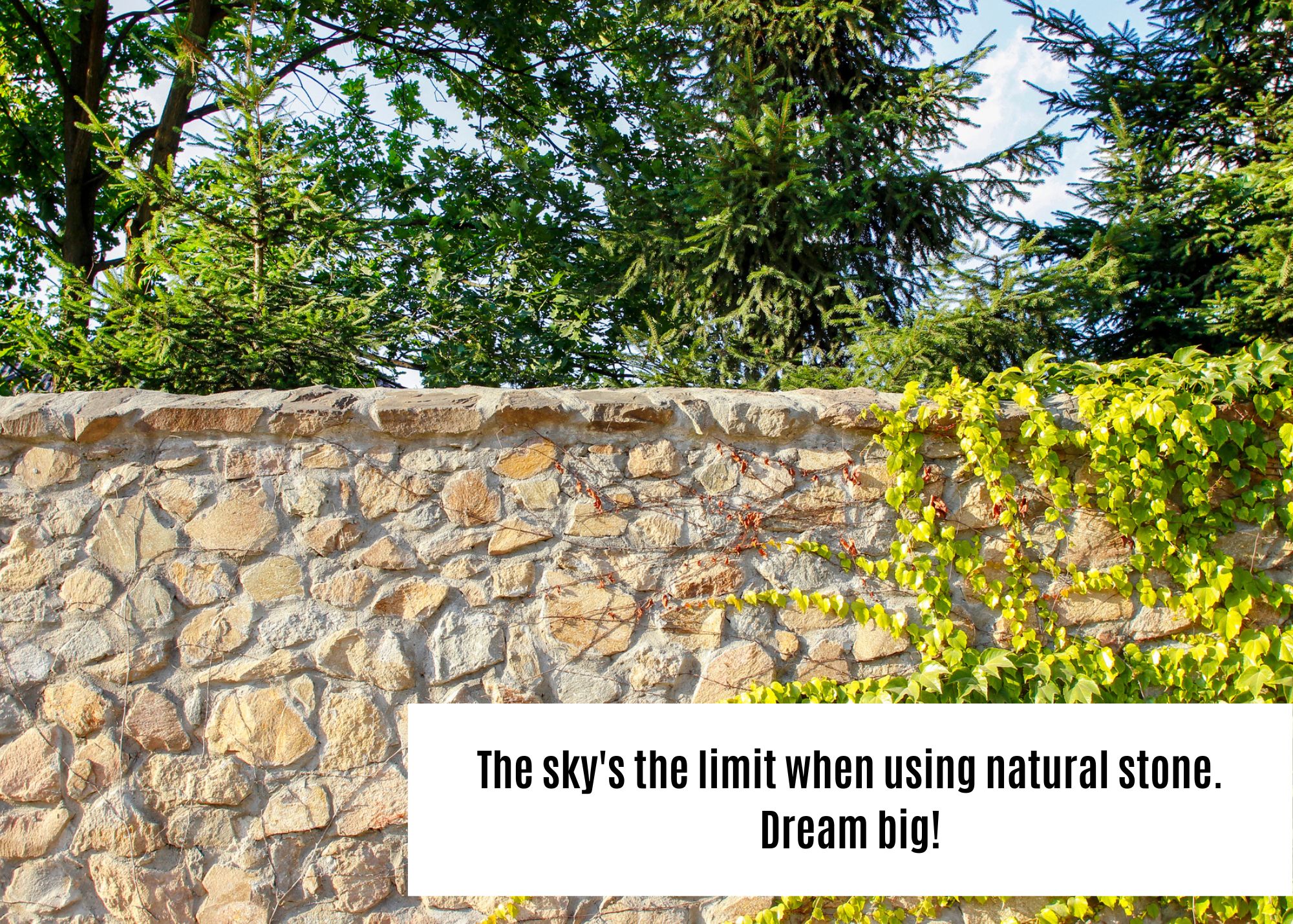Landscaping Materials 101: The Magic of Natural Stone
If you are working on the landscaping on your property, a materials list is probably at the front of your mind right now.
There are scores of landscaping materials to choose from, and making solid, informed decisions can be difficult.
At Zimmerman Mulch, we get that you want to use the best possible materials for your yard, but sometimes it’s difficult to know what’s best for you.
Today, we’d like to guide you through the ins and outs of natural stone. Hopefully, we can help you determine whether natural stone is a good choice for your landscaping project.
Let’s get started!
What Is Natural Stone?
First off, what is natural stone? Isn’t all stone just stone? What makes it “natural” anyway?
Here’s our definition: Natural stone for landscaping is any type of stone quarried from the earth to be used for building or decorative purposes.
Natural stone is the opposite of engineered products, such as concrete pavers, which are made to look like stone. Natural stone is the real deal! It may be cut and shaped for use in various projects, but it occurs naturally without the help of man.
There are lots of different different types of naturally occurring stone that are often used in landscaping and construction. We’ll explore a few of these in the next section, so stay tuned!
6 Common Types Of Natural Stone
Natural stone comes in all sorts of different shapes, colors, and textures, and each piece is 100% manufactured by Mother Nature. That means each one is unique!
There are three basic categories of rock: igneous, metamorphic, and sedimentary. There are numerous subcategories in each of these categories, meaning there are many rock types to choose from.
Here are a few of the most common types of natural stone you’ll find in landscaping.
-
Sandstone
Sandstone is a sedimentary rock made up of densely packed grains of sand. It is widely available in nature, which means it is more affordable than some types of natural stone.
Sandstone comes in many colors and textures and is commonly used in landscaping for various purposes. Its rough, porous texture makes it a great non-slip surface for use around pools, although sealer may be necessary to keep it from getting waterlogged.
However, that same porosity makes it a poor choice for fire pits since water can permeate the rock and expand when heated. This results in the stones cracking and, in some cases, even exploding.
-
Limestone
Calcium-heavy limestone is another excellent choice for landscaping. It is often used as gravel for drainage, gardening projects, or driveways.
Because it contains a lot of calcium, limestone gravel can even help you reduce acidity and add richness to your soil.

-
Slate
Slate is a metamorphic rock often used for roofs or paving. It has a very low water absorption index, which makes it weather and stain-resistant (which is why it’s so good for roofing and paving.)
Slate generally comes in a dark blue-gray color and makes a very classy addition to landscaping.
-
Granite
If you want a tough, durable stone, granite is a great choice. Granite is one of the hardest stones out there and makes excellent steps, paving, decorative boulders, and more.
Granite often has a slightly speckled appearance and comes in lots of different colors.
-
Quartzite
Durable and elegant, quartzite adds plenty of beauty and grace to a space. It comes in white, gray, and various shades of pink, red, yellow, and orange.
You may find quartzite in interiors as a countertop, but you may also find it used for paving or decorative boulders.
-
Gravel
We all know what gravel is :). However, here’s our definition: Gravel is a material of naturally occurring loose stone chunks with rounded edges. You might find it in a gravel pit or river.
Gravel can be made of many different types of stone, such as granite, sandstone, limestone, and more, and it suits many different purposes in landscaping.
Pros And Cons Of Natural Stone In Landscaping
Now that we’ve looked at what natural stone is let’s talk about why you may or may not want to use it in your landscaping.
PROS
- Timeless style - Natural stone has a beauty and style that never gets old!
- Durable - Rock stands up to the elements in nature for years. It will hold up in your landscaping just as well!
- Adds great value - Using quality products such as natural stone can significantly raise your home value.
- Authentic charm - While artificial products are beautiful and functional, there’s a bit of sentimental value that goes with the “real deal.” You just can’t quite beat it with artificial products!
- Can be repolished if stained or scratched - Man-made products are often made of cement and finished to look like real stone. That means you cannot repolish them if they become stained or scratched. On the other hand, you can re-polish a solid granite table as many times as you want!
CONS
- May lack customizability and uniformity - Mother Nature decides how natural stone is formed. So, while you can cut, polish, and otherwise altar stone, you can only do so much with what Mother Nature gives you. Natural stone may not be as uniform or as customizable as man-made materials.
- Heavy - In general, man-made pavers (tiles, flagstones, etc.) are lighter and easier to work with than large chunks of real stone.
- Pricey - Natural stone is amazing stuff. But it can come with a pretty hefty price tag! It is generally pricier than manmade stone.
- May require ongoing sealing - Not all types of natural stone require sealing. However, some may require a regular coat of sealant to prevent staining and reduce slipperiness.
- May not look just like the sample - You might see a beautiful, marbled quartzite sample and think, “I want that for my yard!” However, if you order quartzite, it may not look just like the sample because each piece of natural stone is 100% unique.

Those are a few of the pros and cons of natural stone as a general category. Each type of natural stone has its own set of pros and cons.
For more information on specific types of natural stone available in your local stores, contact a local contractor who can tell you about the products they sell. If you live in the Lebanon, PA, area, feel free to contact us here at Zimmerman Mulch!
Next, we’ll look at what sorts of projects you can do with natural stone in your landscaping.
13 Uses For Natural Stone In Landscaping
There are plenty of ways to use natural stone in your landscaping! As we said, Mother Nature may be a limiting factor since you have to work with what she gives you. But despite that, there are hundreds of things you can do.
Here are a few ideas to get you started. One of these ideas could be just the thing for your property!
- Patios
- Walkways
- Driveways
- Steps
- Retaining walls
- Water features
- Rock gardens
- Rock sculptures
- Decorative boulders
- Edging flower beds or walkways
- Fire pits or fireplaces
- Weed barriers
- Pools
These ideas are just a starting point for you to dive off of so you can develop your own unique ideas for your landscaping. The sky is the limit, so think big and see what you can come up with!

Conclusion
There are lots of landscaping materials to choose from! We understand that it can be a little overwhelming sometimes.
We hope this article helps you learn about natural stone and whether it’s a good choice for your landscaping. Now, maybe you can go get creative with natural stone!
If you want to check out some natural stone today, take a look at the Zimmerman Mulch website!
We carry a variety of landscaping and outdoor living products, including natural stone and more:
And more! You can take a look at our online store or visit us in person.
Contact us today–we can’t wait to hear from you!



